This Hyderabadi chicken biryani is the most delicious and aromatic Indian dish ever, with juicy chicken in layers of fluffy rice, fragrant spices and fried onions. I share with you two easy ways to make biryani while still retaining the authentic taste.
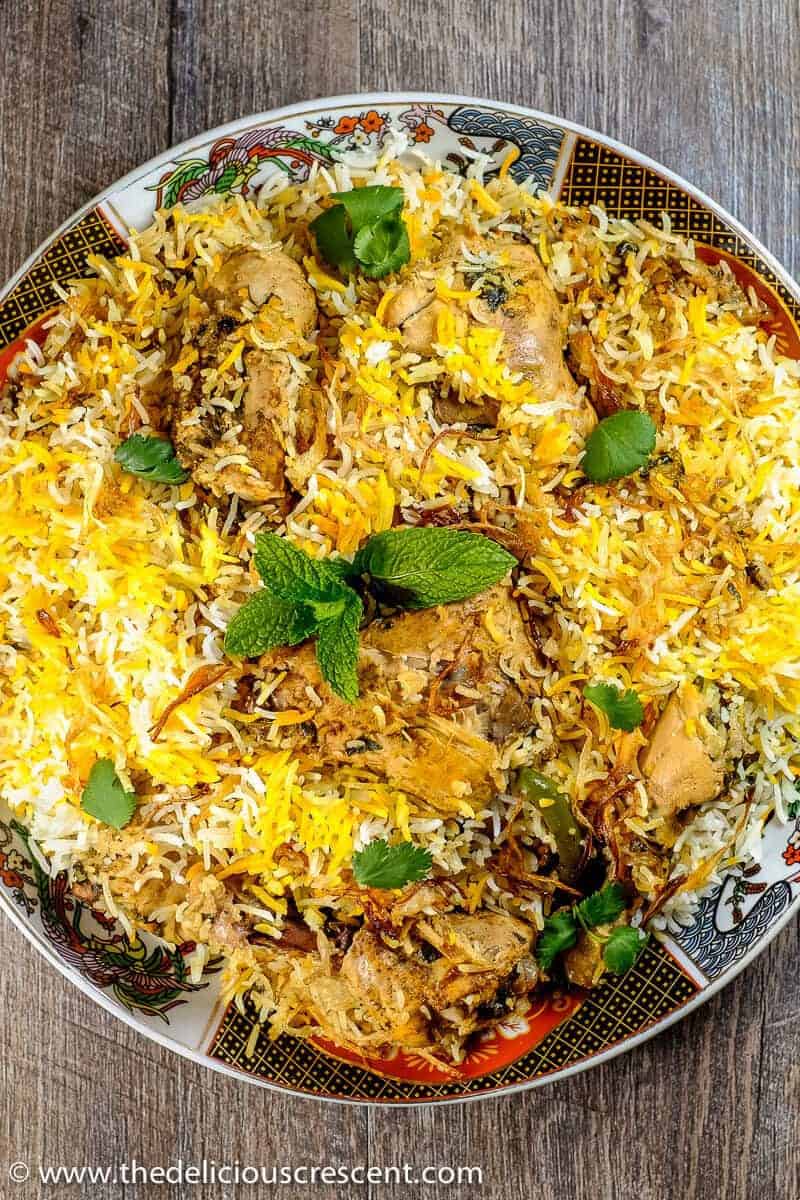
Biryani is a classic Indian mixed rice dish that is part of the Indian Mughlai culinary tradition, which traces its roots to central Asian cuisine and a rich fusion with Indian flavors and techniques. It is prepared with layers of fluffy basmati rice and exquisitely spiced meat or chicken.
Hyderabad, the city of my childhood, is rightfully famous for its biryani - an addictive rice and meat/chicken dish. And Hyderabadi biryani is by far the most favored among the other regional versions.
There are two versions of Hyderabadi biryani:
- Pakki biryani - cooked meat or chicken is layered with parboiled rice and steamed together.
- Kacchi biryani - raw marinated meat or chicken is placed in a single layer in the bottom of a cooking pot and topped with partially cooked rice and steamed together. This is the easier method.
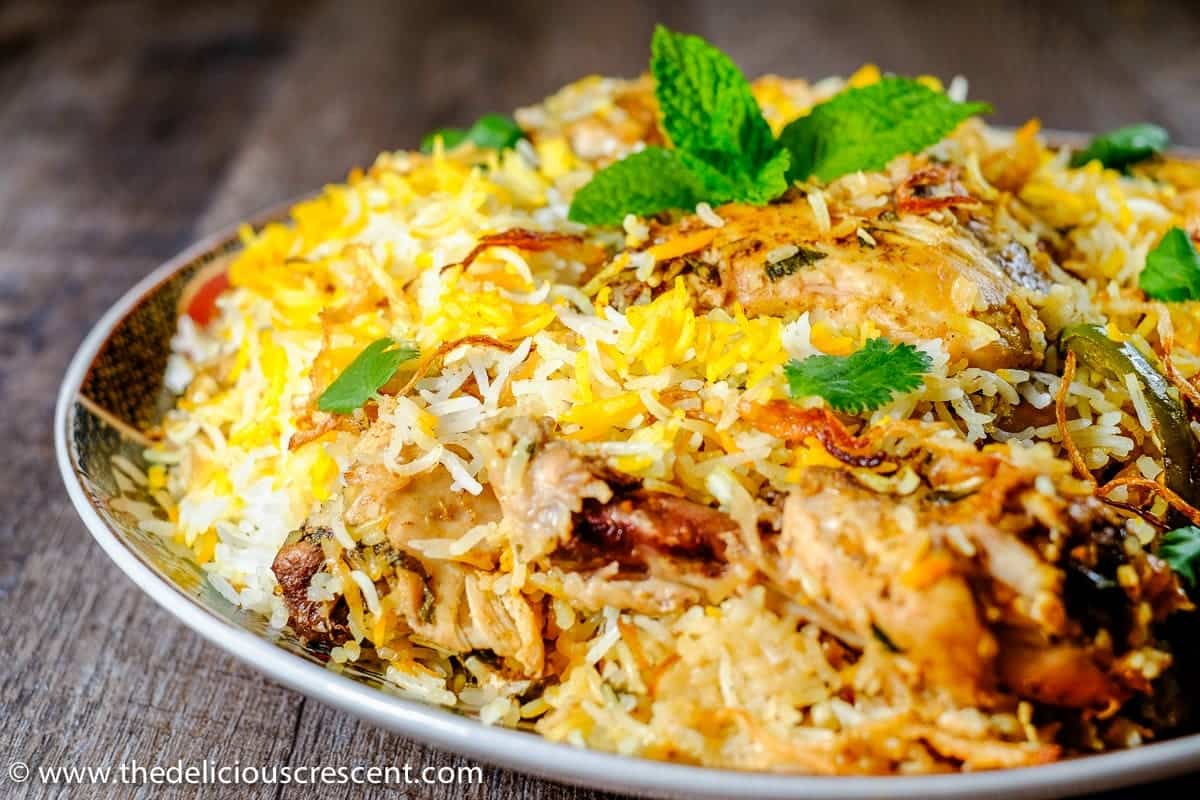
Why This Recipe Works
- One Step: You don't have to cook the chicken separately before layering it with the rice.
- Perfect Rice: Easy rice cooking techniques for fluffy rice - (1) more reliable rice cooker method and (2) great tips for traditional method.
What Makes a Perfect Biryani
- Texture of Rice Grains: The cooked rice is fluffy and separate. If you take a fistful of biryani and throw it on a plate, the rice will scatter like pearls and not clump together. With this recipe you will get that perfection every single time!
- Juicy and Flavorful Chicken: Marinate the chicken for a long time to infuse the flavors. Cook it until well done, juicy and falling off the bone.
- Spices and Aromatics: Don't skimp on the spices, fried onions, oil, salt and seasonings. You need that for robust flavor.
- Elegant Presentation: The final dish has rice grains in a variety of colors from the absorption of spices, juices and saffron.
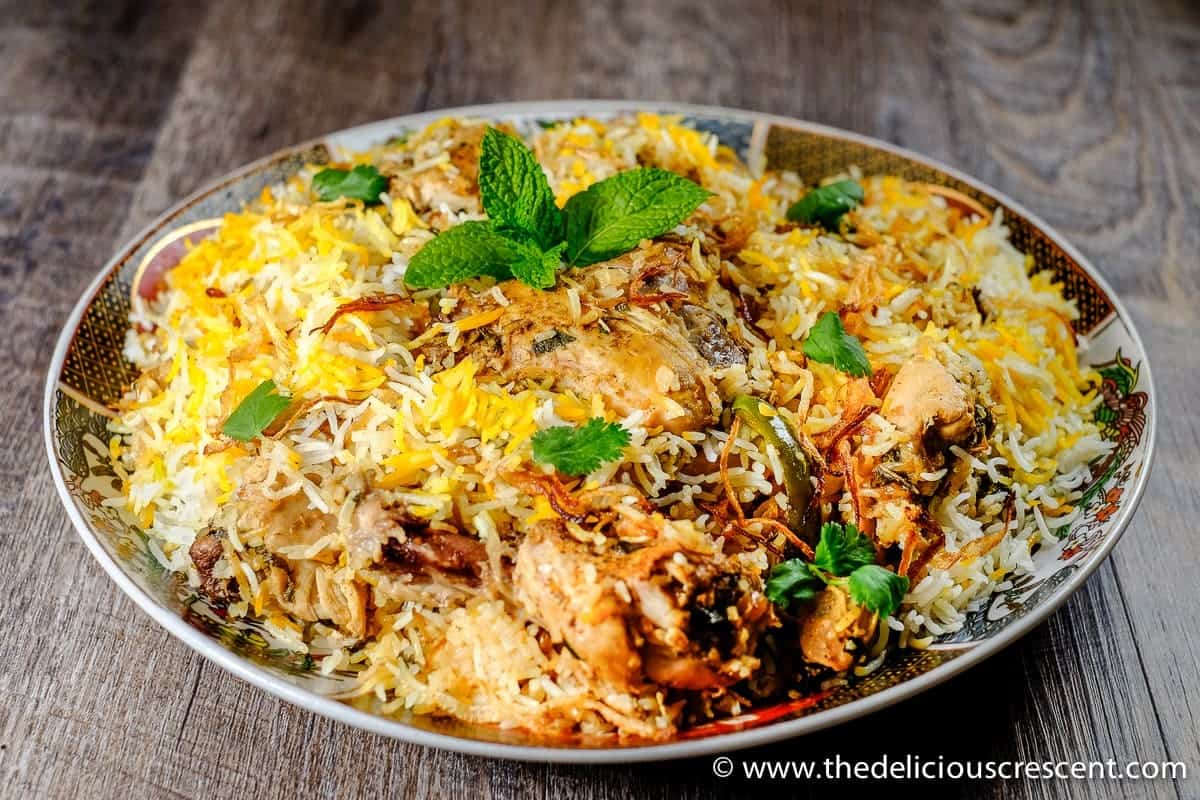
Ingredient Notes
- Basmati Rice: I use the highest quality aged long grain basmati rice from a popular brand, such as India gate classic. Look for the best variety in any brand at your Indian grocery store, which is usually the most expensive.
- Chicken with bone: I choose whole chicken with bone as it is the most flavorful. Chicken leg quarters or thighs will work too. But avoid chicken breast as it will be too dry. For boneless option, use chicken thigh meat.
- Yogurt: Just plain regular yogurt that is neither be too thick nor too runny. Not Greek yogurt. To make it dairy free, try coconut yogurt.
- Spices:
- I use ground spices to marinate the chicken. If using whole spices, double the amount because ground spices are more intense.
- Flavor the rice with whole spices wrapped in a muslin cloth or metal mesh cooking infuser.
- Homemade biryani masala recipe is below. For a ready-made option, try Shaan Sindhi biryani masala, but adjust the added salt and chili powder.
- Herbs: Fresh cilantro and mint will give the best results. But frozen cilantro and dried mint can also work for the marinade.
- Ginger and Garlic: Grate or grind these fresh for amazing taste.
- Saffron: High quality saffron adds great flavor. Read more: Saffron Tea.
- Onions: Thinly slice the onions. I use my mandolin slicer. To fry them quick and crisp, sprinkle some flour on the onions before frying. Gluten-free flour alternatives are corn starch or rice flour plus corn starch.
- Ghee: Drizzle the rice with ghee to take your biryani up a notch.
How To Make Easy Biryani
*Here is the step-by-step overview of the process. Full recipe with measurements and video tutorial are below in the post.
Fry the Onions
- Slice onions very thinly and fry them in batches using fresh oil, until crisp and light golden brown.
- Don't let them turn soggy or dark brown. Drain on paper towels.
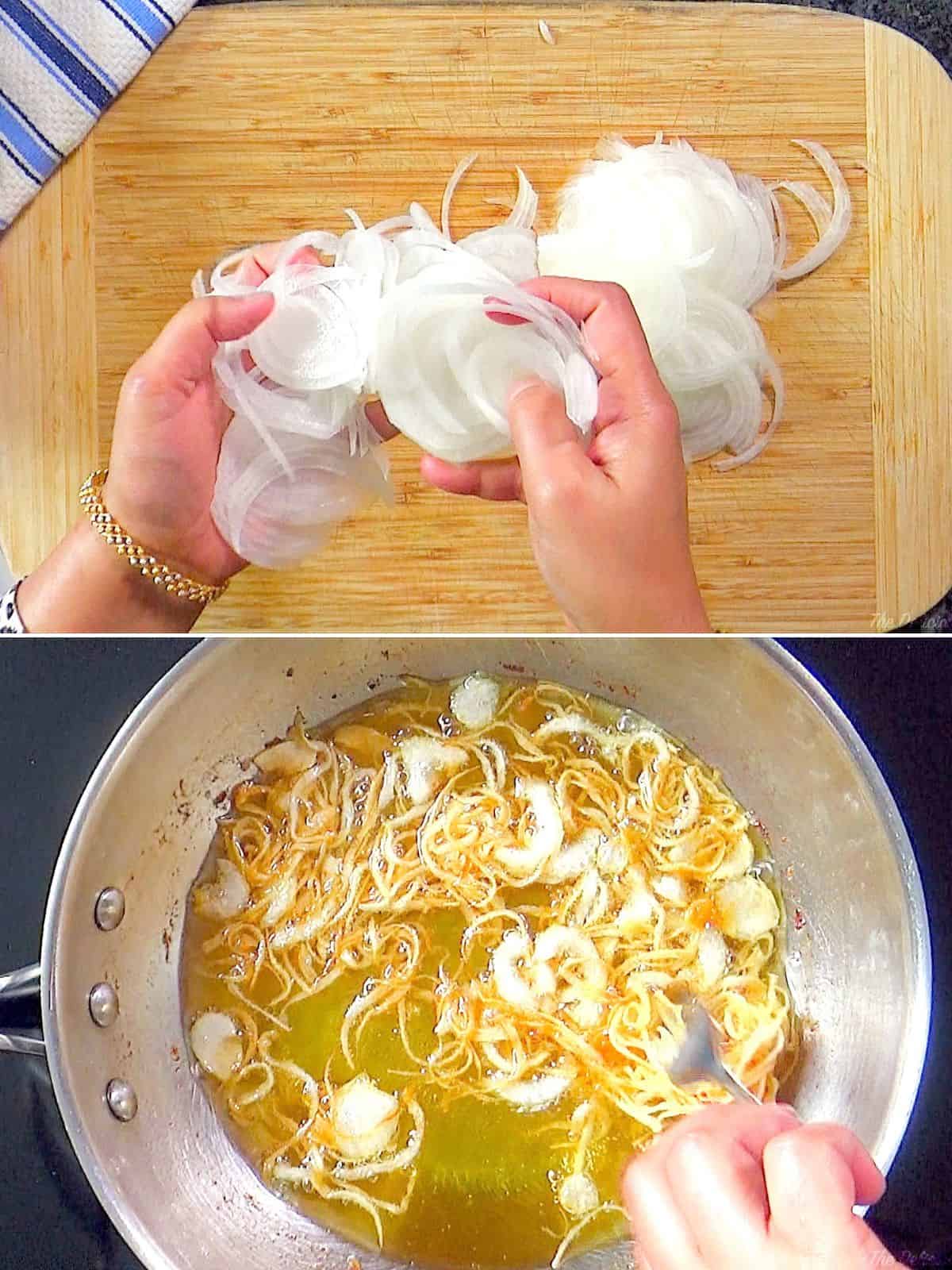
Marinate the Chicken
- In a wide cooking pot, combine chicken with all marinade ingredients, ⅓ fried onions and ground biryani spice blend. Marinate for 3 to 5 hours.
- Rule of thumb is to use equal amounts of rice and chicken by weight. Example: one pound rice for one pound chicken. If you want more chicken, use 1½ to 2 times the quantity of rice.
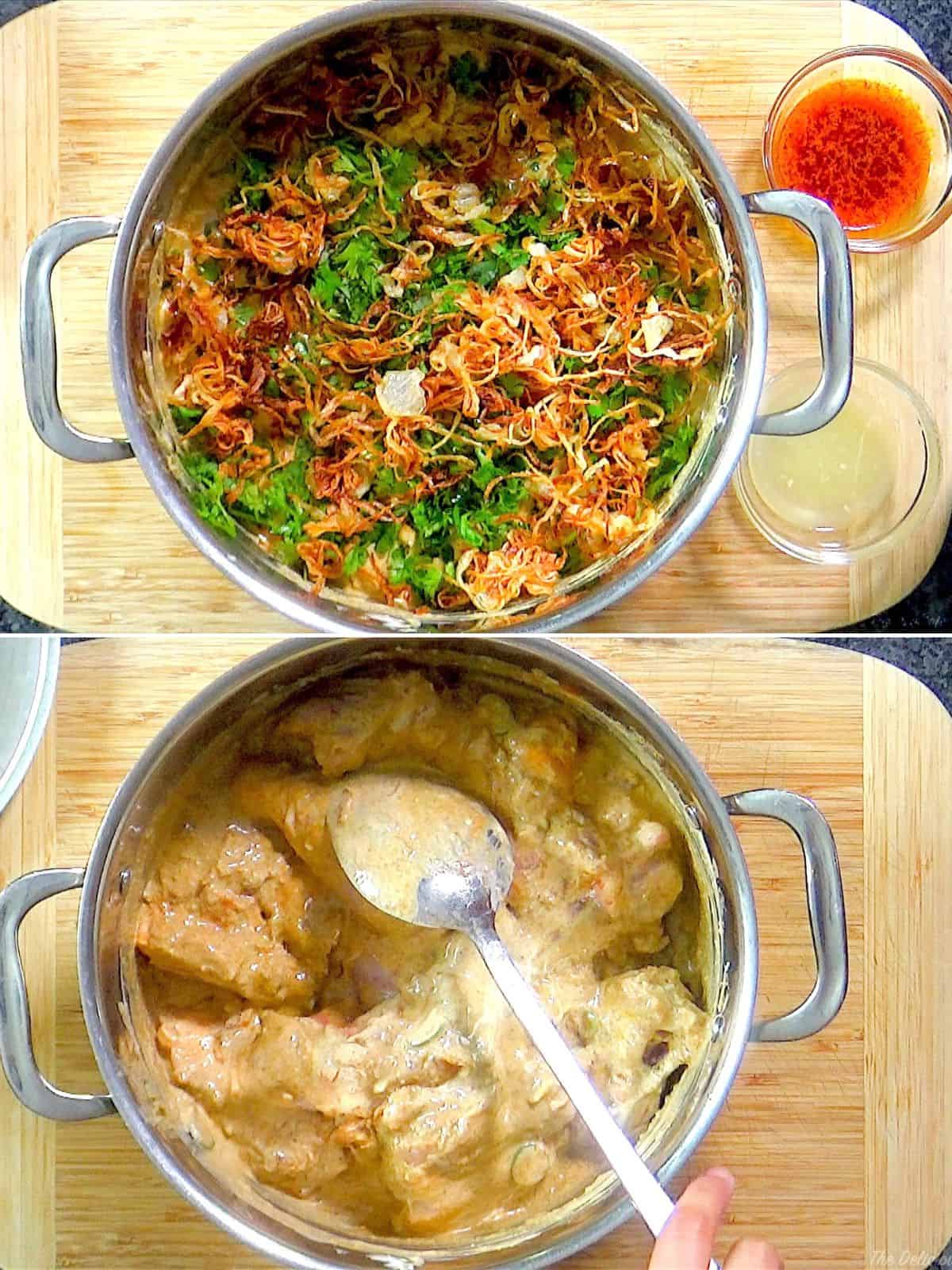
Cook Rice (Two Methods)
- Rinse basmati rice until clear. Soak ⅓ cup rice in water. Use remaining rice for cooking.
- Rice cooker method: Bring water to a boil with salt and oil. Add rice and cook just until water is absorbed. Tip: Test a ratio of 1¼ to 1½ cups water for 1 cup basmati rice.
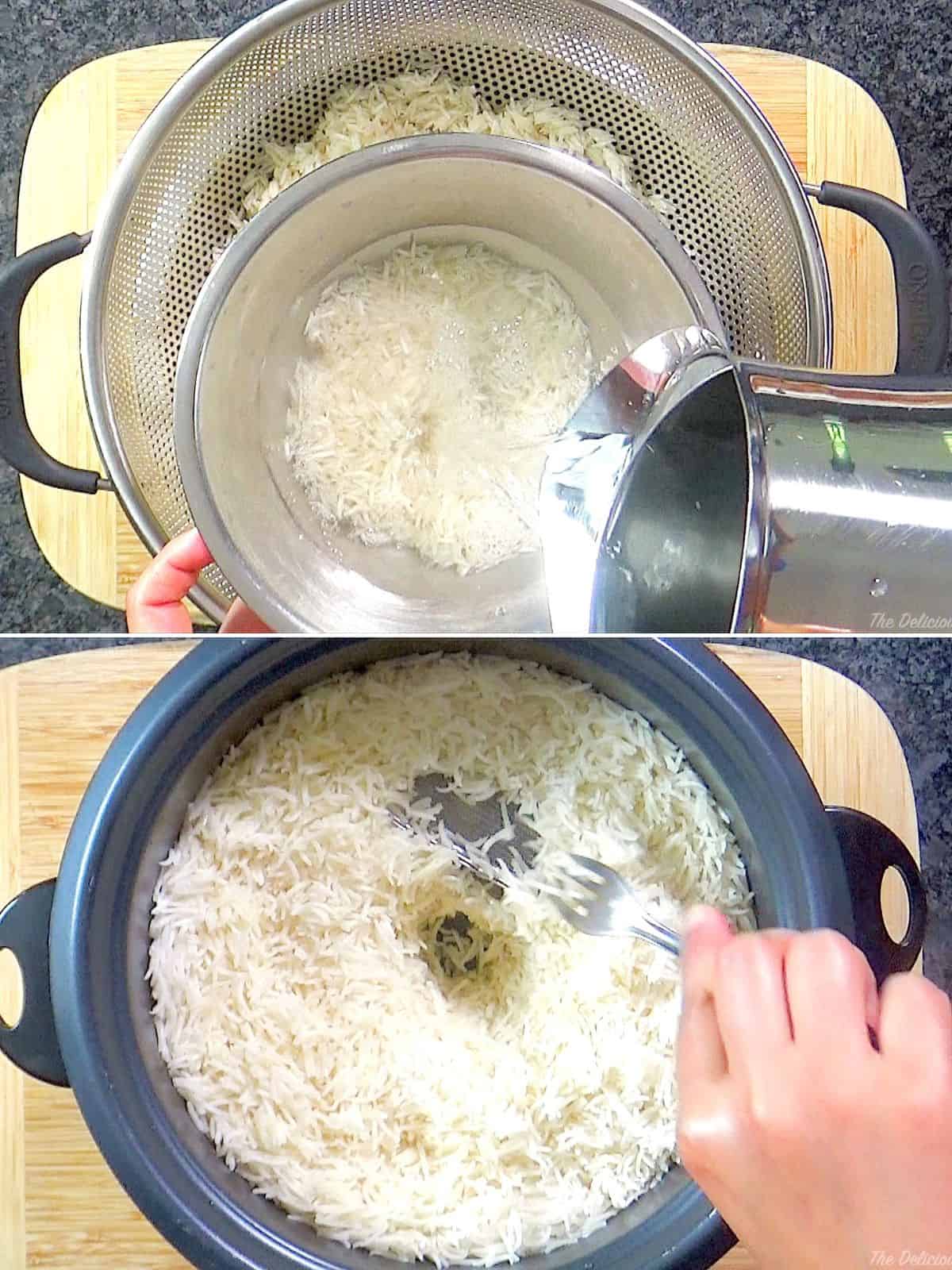
Traditional method: Boil rice in lots of salted water, using a ratio of 3 cups of water for 1 cup of rice with 2 teaspoons of salt. Cook it al dente like pasta, for 4 to 5 minutes and drain the rice immediately. We use this method for our lamb biryani recipe.
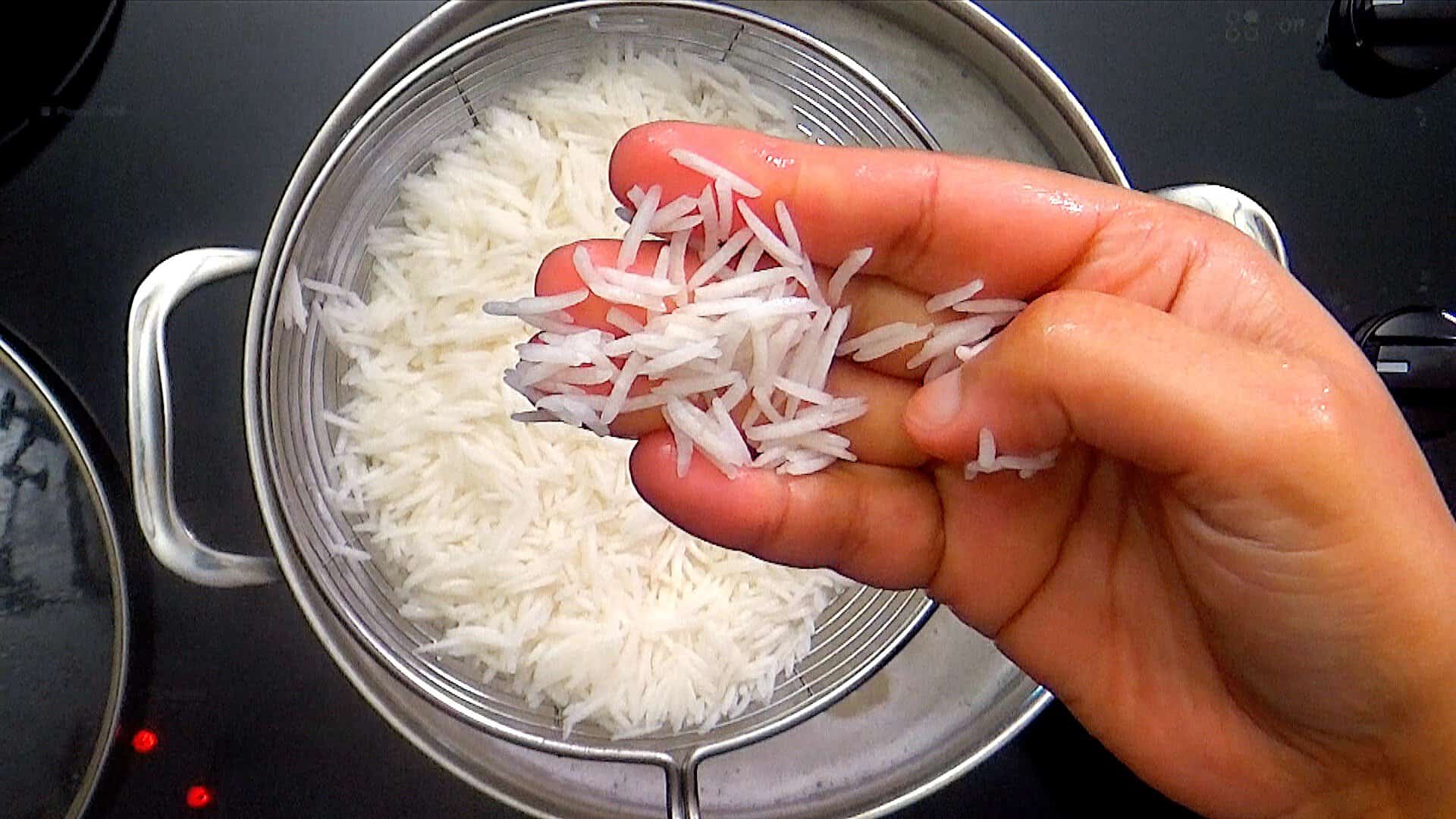
Assemble Rice and Chicken in Layers
- Top the marinated chicken with chopped cilantro, mint, half lemon juice, some oil and most of the remaining fried onions. Tip: If cooking on stove, use a thick bottomed cooking pot. Very deep and tall pots are not suitable.
- Add Soaked Rice: Drain soaked rice and spread it over the chicken. This raw rice will absorb all the juices from the marinade while cooking.
- Final Rice Layer: Transfer all the cooked rice over marinated chicken. Top with remaining fried onions, lemon juice, saffron water and ghee.
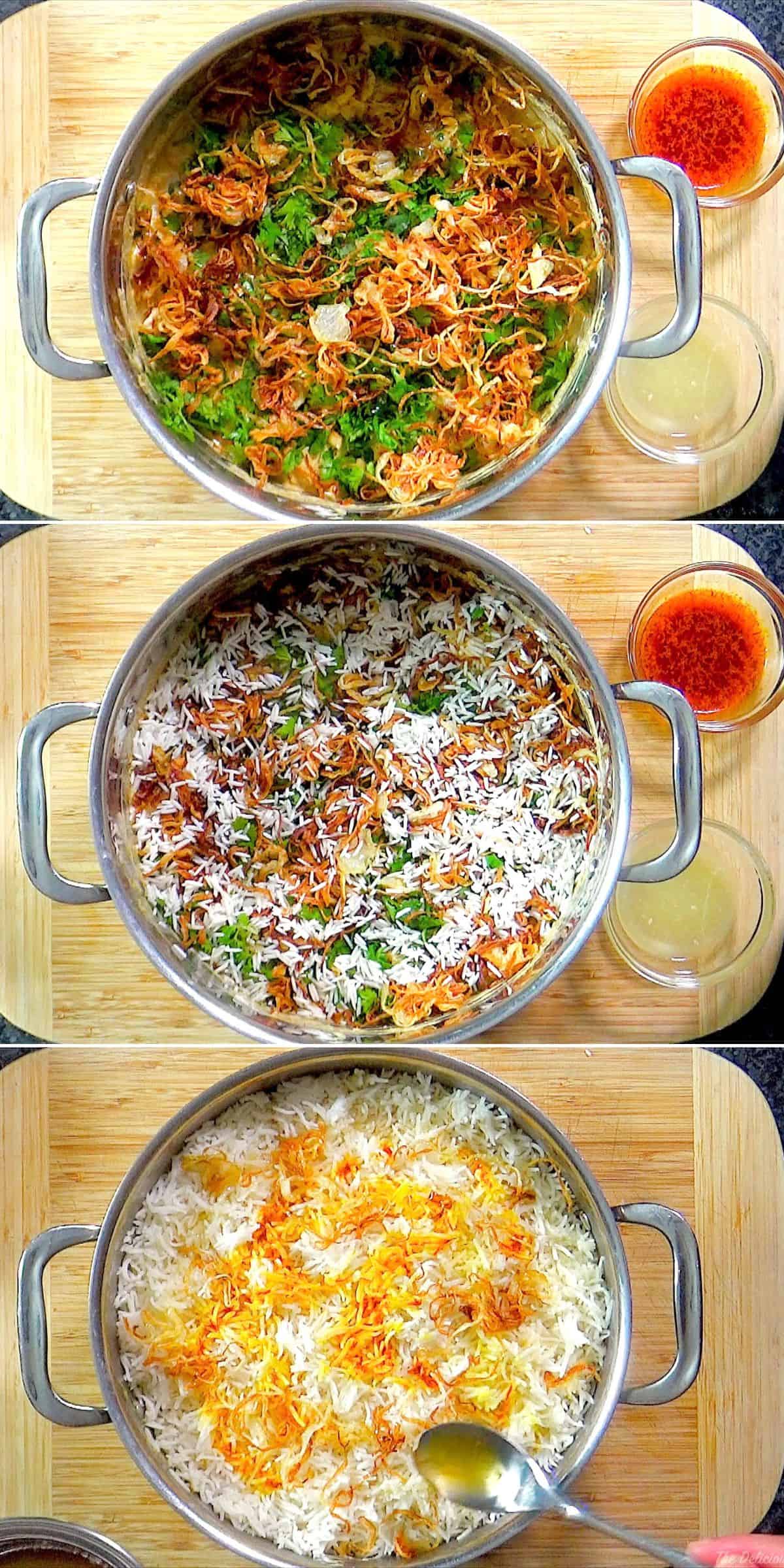
Steam and Serve
- Steaming: Cover with parchment paper, followed by aluminum foil and fit the lid tight for perfect seal. Bake in oven for one hour, until steam builds up well. (Stove top method: Alternatively, heat biryani at medium high for 10 minutes and then simmer at low for one hour until steam builds up well.)
- Serve: Cool biryani for five minutes. Gently mix rice and chicken and enjoy!
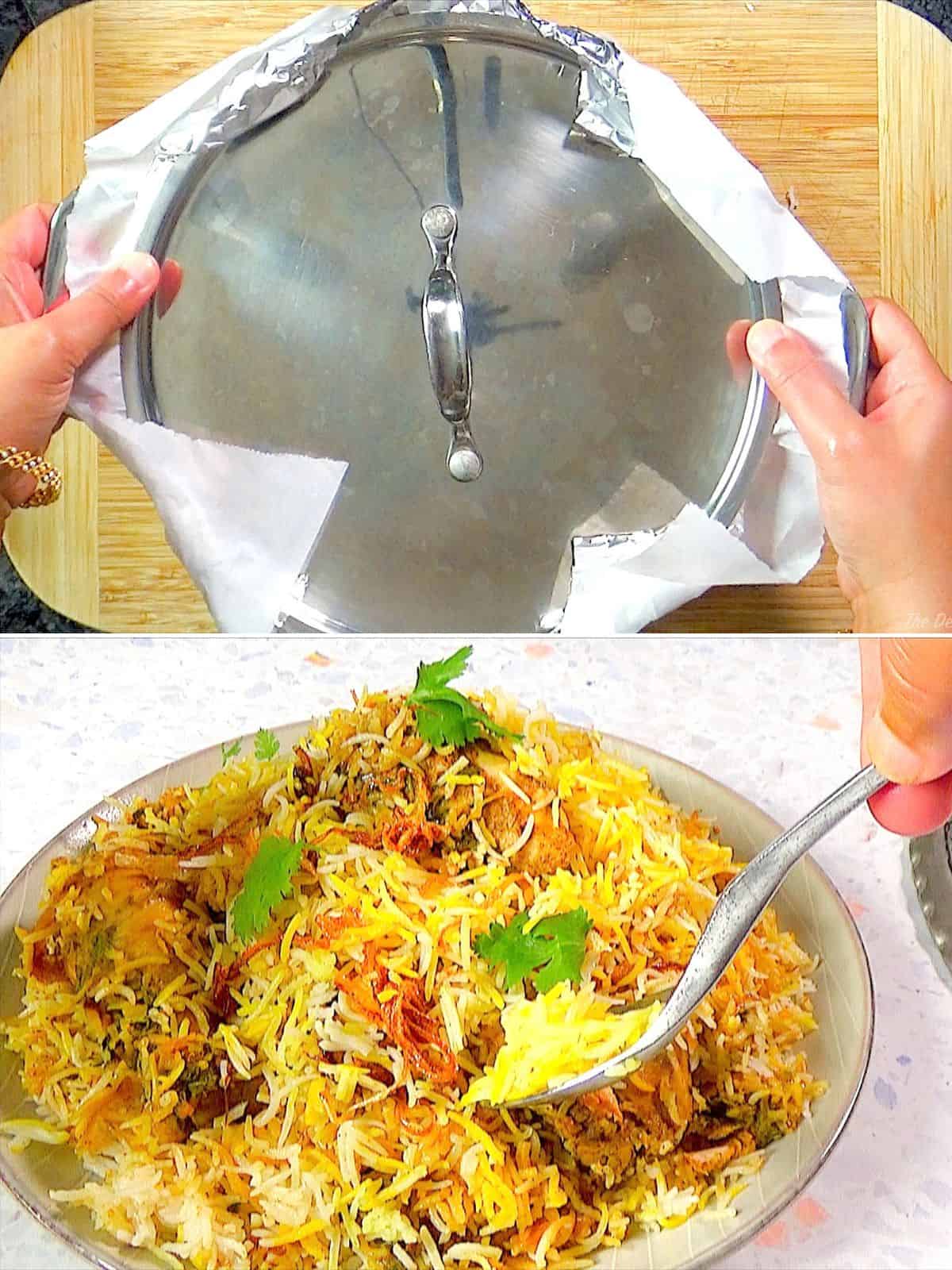
How to Serve
Biryani is typically served at festive occasions and considered a complete meal, along with a saucy side dish such as baghare baingan (eggplants in rich sauce), mirchi ka salan (chili peppers in creamy sauce) or Hyderabadi tomato egg curry and a yogurt salad called raita.
For a more elaborate menu, you can add other dishes such as:
- Mains: Nihari, Keema Curry
- Bread: Naan, Paratha
- Vegetarian: Aloo Gobi, Tadka Dal
- Appetizers: Meat Cutlets, Fish Patties
- Desserts: Kheer, Falooda
Biryani Masala
Grind all the spices below into a fine powder and store in airtight container. One fourth of this blend will be enough for the biryani recipe in this post. To make it more spicy, use extra spice blend.
- 4 cinnamon sticks
- 4 black cardamom
- 20 green cardamom
- 1 teaspoon cloves
- 4 large bay leaves
- 4 teaspoons black cumin seeds (shahjeera)
- 2 teaspoons black pepper
- ⅛ teaspoon nutmeg (optional)
- ⅛ teaspoon mace (optional)
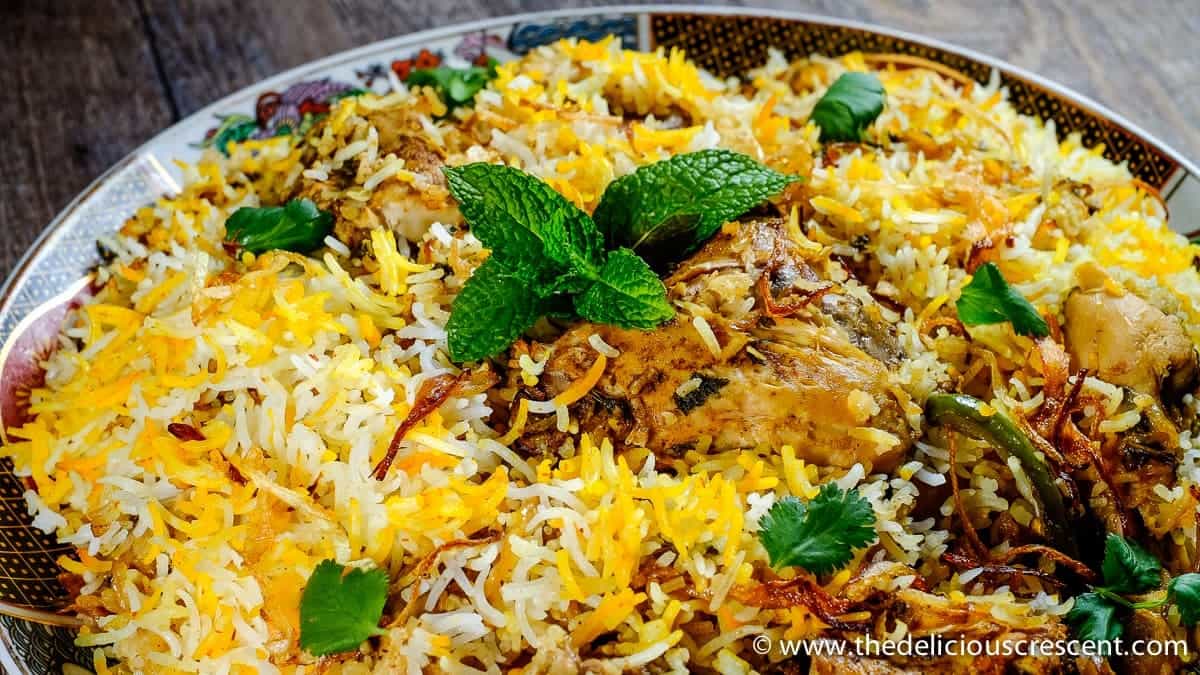
Troubleshooting
Here are some fixes for common issues while making biryani. Comment below for any other troubleshooting. I grew up cooking this amazing dish and will be glad to help.
If cooking on stove top, place the cooking pot over a flat griddle or heat diffuser. This will help prevent the rice getting burnt in the bottom.
Use chicken on bone. Cook with enough yogurt and juices but don't overcook the meat. Use optimal amount of water for the rice. And if rice is undercooked before steaming, then sprinkle some water all over before placing the lid.
Scoop out juices collected over marinated chicken and discard. Do not use too much yogurt. Do not overcook rice, but if it get's overcooked then spread it on a large plate and aerate a bit before layering.
If using traditional method then boil rice in plenty of salted water just for 4 to 5 minutes until it is parboiled, making sure the grains don't get overcooked. Soak rice prior to cooking to make the grains stronger. And steam biryani in a wide cooking pot.
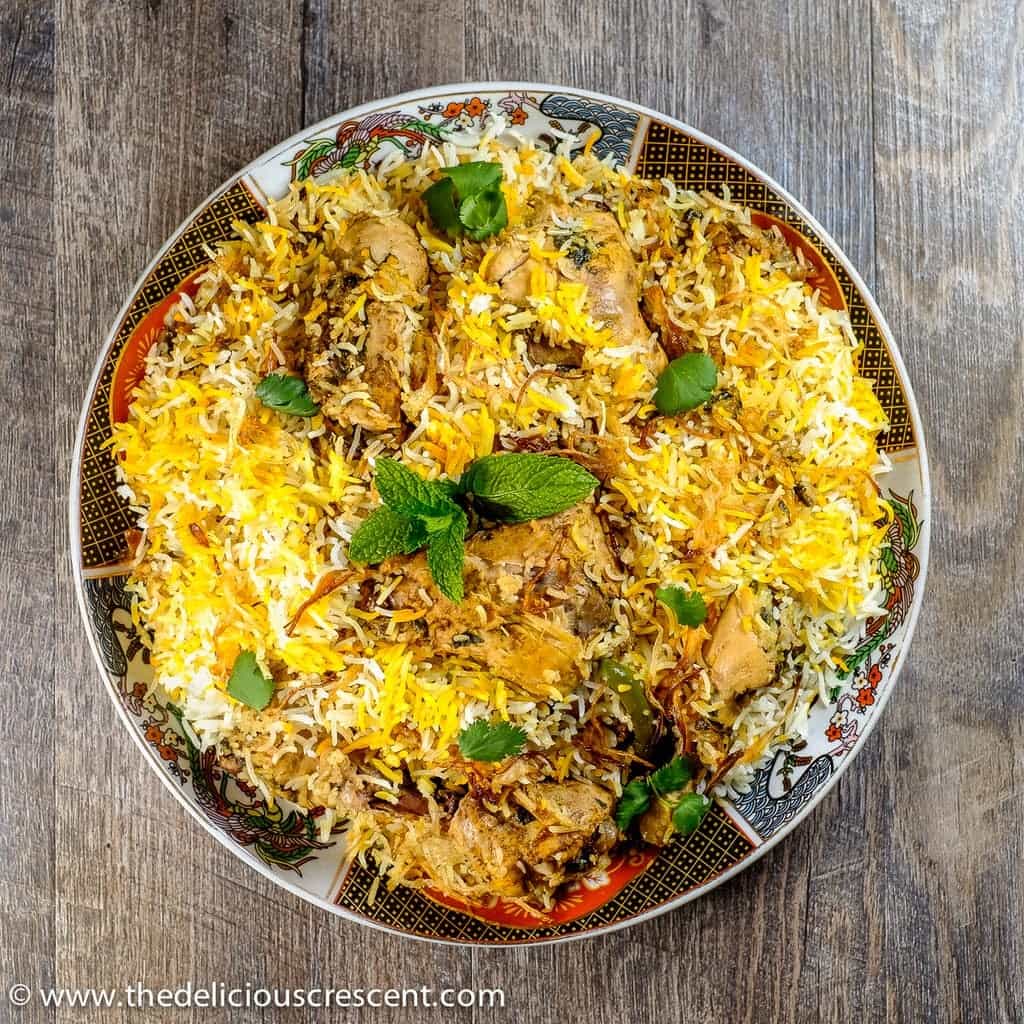
More Rice Recipes
- Hyderabadi Lamb Biryani
- Saffron rice with chicken, yogurt and spinach
- Persian shrimp rice
- Persian green bean rice
Full Recipe Video
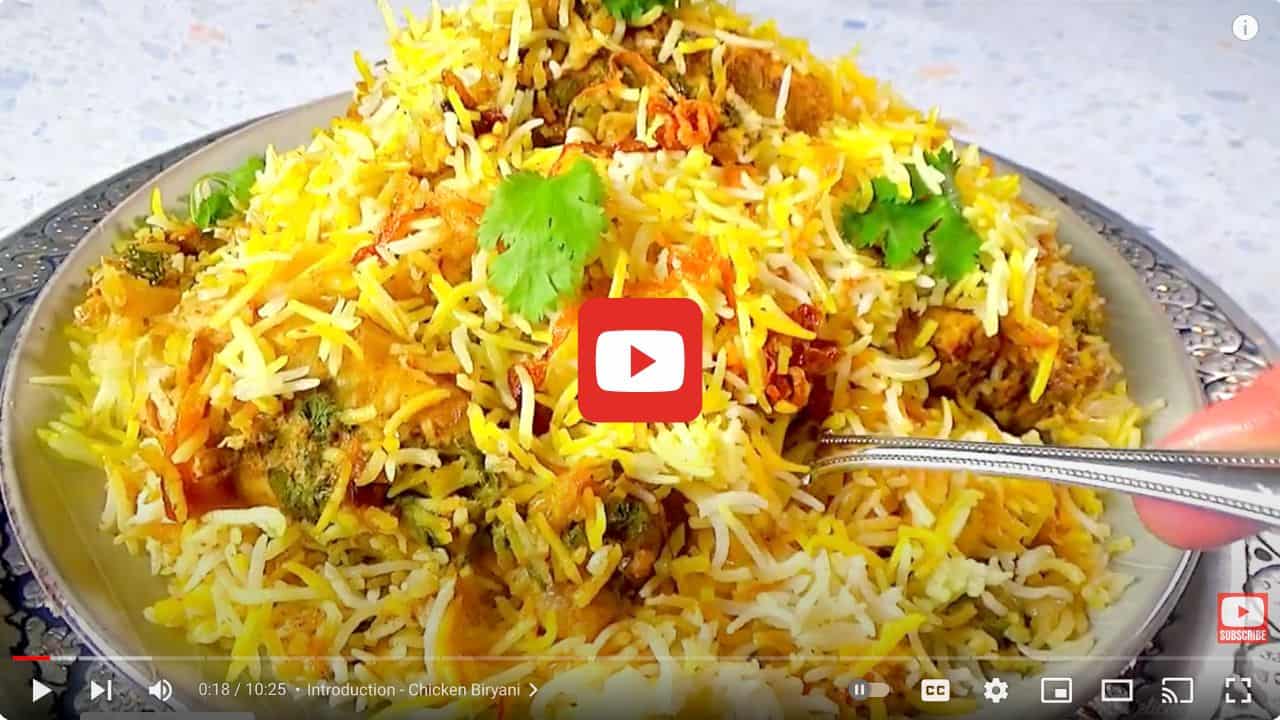
★ DID YOU MAKE THIS RECIPE? PLEASE COMMENT AND GIVE IT A STAR RATING BELOW!

Hyderabadi Chicken Biryani
Ingredients
Fried Onions
- ¾ lb onions yellow, thinly sliced
- 1½ cups cooking oil high smoke point, peanut oil
Chicken Marination
- 1½ lb chicken with bone, cut and clean, avoid chicken breast
- ⅔ cup yogurt plain
- 1½ tablespoons ginger garlic paste or grated ginger and garlic
- 1 teaspoon salt adjust per taste
- 1 teaspoon chili powder
- ½ teaspoon turmeric ground
- 1 chili pepper jalapeno, serrano or cayenne, adjust per taste
Spices for Marinade (see note)
- 1 cinnamon stick
- 1 black cardamom
- 5 green cardamom
- 5 cloves
- 1 bay leaves large
- 1 teaspoon shah Jeera see note
- ½ teaspoon ground black pepper
Biryani
- 2 cups basmati rice long grain
- 1 teaspoon salt adjust per taste
- 2 tablespoons cooking oil leftover from fried onions
- ¼ cup cilantro fresh, chopped
- 2 tablespoons mint fresh, chopped
- 2 tablespoons lemon juice
- 1 teaspoon saffron ground and dissolved in 2 tablespoons hot water
- 2 tablespoons ghee recommended
Whole Spices for Rice
- 1 black cardamom
- 3 green cardamom
- 4 cloves
- 2 bay leaves
- ½ cinnamon stick
Equipment
- Rice Cooker
- Wide Frying Pan
- Candy/Fry thermometer optional
- Spice Grinder
- Wide Cooking Pot 5 quart, 10 inch diameter, oven proof
Instructions
Fry Onions
- Heat oil at medium high in a wide frying pan. If you place your palm about 3 inches over the surface of oil, you should feel the heat. Or use a candy/fry thermometer to check temperature.
- Fry onions in batches. Do not crowd the pan. Fry until crisp light golden brown. Set aside.
Marinate Chicken
- In a large mixing bowl, combine chicken with all the marinade ingredients and ⅓ of fried onions. For yogurt, start with ½ cup and increase as needed to ¾ cup. The mixture should be thick and not runny.
- In a spice grinder, process spices for marinade until fine powder. Add to chicken marinade and mix. Marinate for about 3 to 5 hours.
Cook Rice (Two Methods, Choose one)
- Rinse rice 4 to 5 times in lots of water until it is clear. Drain well. Soak ⅓ cup basmati rice in water for one hour. Save the rest for next step.
- Rice Cooker Method: In a rice cooker, take 2¼ cups of water, ¾ teaspoon salt, 1½ tablespoons cooking oil and whole spices. Bring it to a rolling boil, add remaining 1⅔ cups basmati rice and stir. Cook rice just until all the water is absorbed. In my rice cooker this process about 15 to 20 minutes.It is important to NOT let the rice steam until it is fully done. When all the water is absorbed well, transfer cooked rice immediately over the chicken in the layering step below.
- Cooking Pot Method: In a large cooking pot, boil 6 cups of water with 1¼ tablespoons salt, 1 tablespoon cooking oil and whole spices. Add the rice and boil at medium high to high heat for 4 to 5 minutes until the grains are soft; stirring in between. Drain rice in a colander and set aside.
Assemble Rice and Chicken Layers
- Scoop out and discard any watery liquid collected on the surface of the marinade. Transfer chicken with marinade to a wide, oven proof cooking pot (9 to 10 inch diameter). Tip: Chicken should be lightly coated with marinade. Too much marinade can make rice soggy.
- Top the marinated chicken with cilantro, mint, 1 tablespoon lemon juice, ½ tablespoon cooking oil and most of the remaining fried onions.
- Drain the soaked basmati rice very well and spread it over the fried onion layer. This raw soaked rice will get cooked with the juices from chicken.
- Next, layer all the cooked rice. Top with remaining lemon juice, saffron water, fried onions and ghee. Tip: If you prefer, pick out the whole spices from cooked rice before steaming.
- Place one sheet of parchment paper, followed by couple sheets of aluminum foil over the cooking pot. Place the lid tight for a good seal.
Steam (Two Methods, Choose One)
- Oven Method: Bake biryani in a preheated oven at 350ºF for one hour, until steam builds up well.
- Stove-Top Method (Alternative): Heat the biryani at medium high for about 10 minutes. Reduce heat to low and cook for one hour until steam builds up well.
Serve
- Remove from oven or stove. Let it cool five minutes and gently mix rice and chicken. Using a spatula, mound the biryani on a serving plate, making sure to present the rice in various colors - white, yellow, orange and brown. Place some chicken pieces on the top. Scatter fried onions, herbs and extra saffron rice on top.
- Serve it with mirchi ka salan or Hyderabadi tomato egg curry and raita.
Notes
- Rinse basmati rice several times until the water is clear and not starchy.
- Rice cooker: Use minimal water to cook rice. Test 1¼ to 1½ cups water per cup of basmati rice and check.
- Alternative to frying onions: If you are unable to fry onions then saute them until crisp golden brown like in this Persian noodle soup recipe and adjust oil used.
- Branded biryani spice mixes may include salt and chili powder. If using that, then adjust salt and chili powder.
- Optimal amount of salt and oil is very important. If everything else is perfect and you don't use right amount of salt, that alone can ruin the taste of biryani. I use a minimum of 2 tablespoons of oil per cup of raw rice, as there are additional ingredients - chicken, onions, etc.
- Whole spices can also be cooked wrapped in a muslin cloth (like boquet garni) or in a metal mesh cooking infuser. If using whole spices for marinade, then double the amount of spices. Ground spices are more intense.
- Meal Prep: Combine chicken with marinade and fry onions a day before.
- Storage and Freezing: Leftovers can be stored in refrigerator for 3 to 4 days or frozen for later.
- Scale Recipe: Click on number of servings and slide. Adjust the cooking pot size.
- Shajeera: These are referred to as black cumin or black caraway seeds in Indian stores. The labeling is not consistent. Ask your Indian grocer for “shahjeera”.
Nutrition
More Indian Recipes
This post was first published on The Delicious Crescent in May 2016 and has been updated for your benefit.



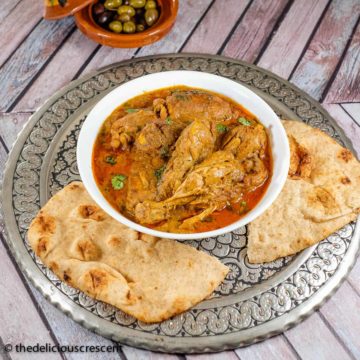
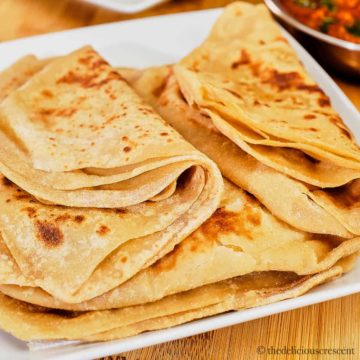
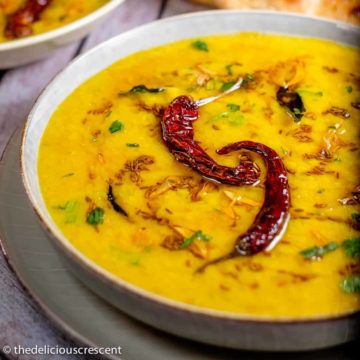
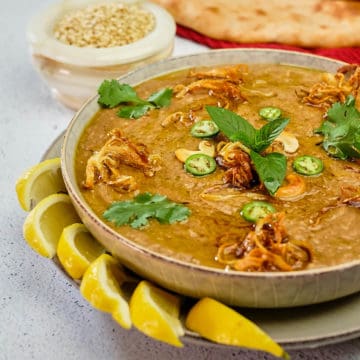
Leave a Comment